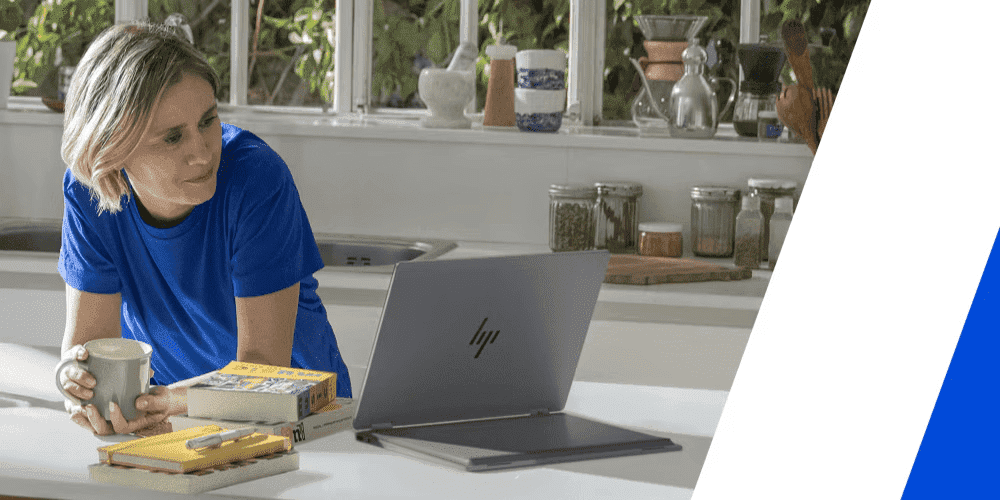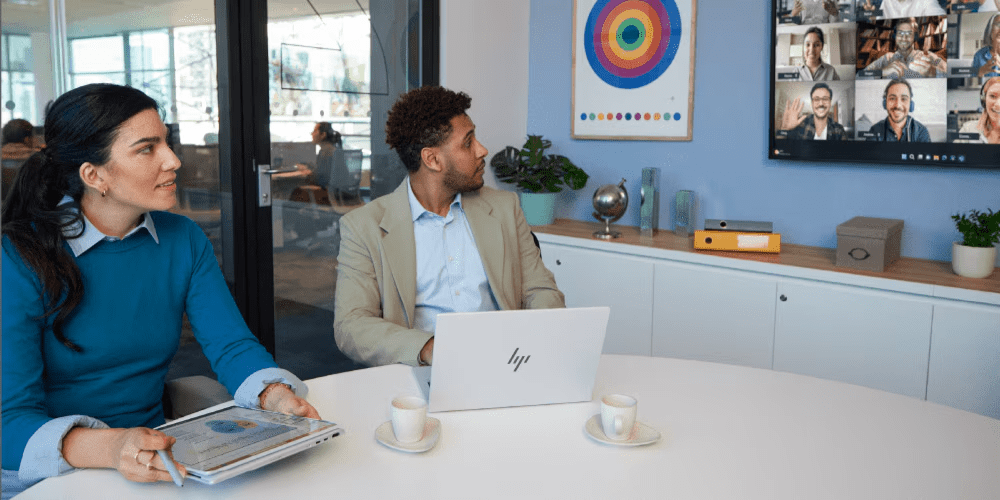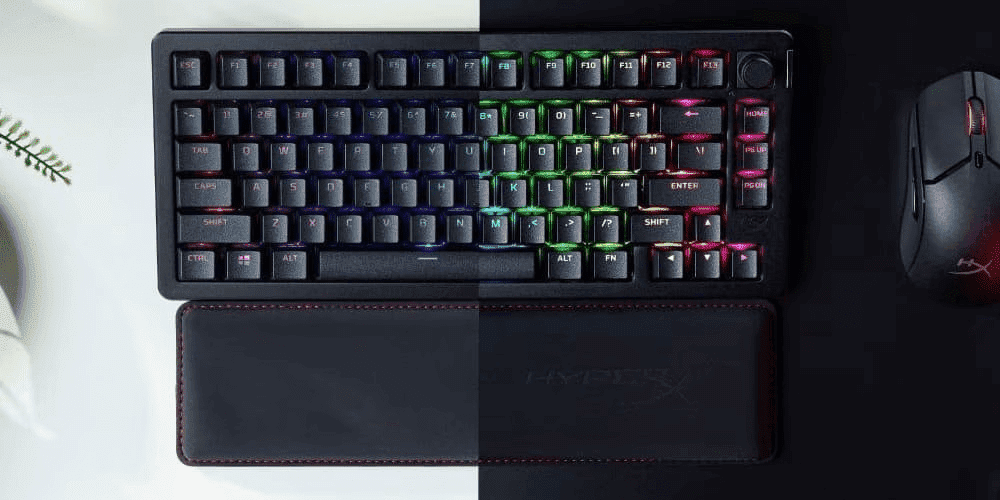Thank you for visiting the AUSTRALIA HP Store
-
Contact Us
CONTACT USCall us
- Sales
- 1300 540 516
- Technical support
- 13 23 47
Exc. public holidays
Chat with us- Our specialist are here to help
- Live Product Demo
- Sales
- 61288061500 (WhatsApp)
-

- Post Sales
- 61288061700(WhatsApp)
Exc. public holidays
Live product demo
Submit feedback We value your opinion! - My Account
Tips and Tricks for Windows 11


If you use a computer or laptop regularly, you’ll likely be aware of Windows 11. It’s the latest OS edition distributed by Windows and has received tons of praise for its user-friendly interface and array of useful features.
Today, we’ll discuss some cool Windows 11 features, as well as other important things about Windows 11. Make sure to read till the end to get the best Windows 11 tips and tricks!
Windows 11 download requirements
To download this newest version of the Windows operating system family, there are several requirements that your laptop or computer must meet. Here are some of the key requirements to run Windows 11.
OS requirements
Only computers and laptops currently running an eligible Windows 10 operating system can be upgraded to a Windows 11. The current Windows 10 OS must be at least the 2004 version for the self-upgrade to work.
You’ll also need to download the Windows security update to abide by the system requirements, more specifically, the September 14, 2021 security update.
Hardware requirements
A device also needs to meet the following hardware requirements to upgrade or install the Windows 11 OS:
It needs to have a minimum RAM of 4GB.
The processor speed needs to be at least 1 GHz and have at least two cores on a compatible 64-bit processor or system on a chip (SOC).
System firmware needs to be UEFI with a Secure Boot cable.
The device should have the Trusted Platform Module (TPM) version 2.0.
A high-definition display (720p) with 8 bits per color channel and at least a nine-inch wide monitor is required.
Installing Windows 11 requires at least 64GB of storage, along with potential additional space to enable specific features and download future updates.
Devices need a graphics card equipped with a WDDM 2.0 driver that is compatible with the DirectX 12 or later versions.
You also need a strong internet connection to perform the download, enable specific features, and update the OS in the future. The Windows 11 Home edition also requires a good internet connection to set up during first use.
Feature-specific requirements
The Windows 11 operating system has a lot of amazing features that are missing from previous versions. However, your device needs to meet certain requirements to use some of them:
- Client Hyper-V: processor must possess second-level address translation capabilities
- Snap: display screen must be at least 1920 pixels in width
- Cortana: needs a working mic and speaker
- 5G support: needs a 5G capable modem
- Presence: device needs a sensor that can detect the distance between the user and the device as well as identify any intent to interact with the device
Coolest Windows 11 tips and tricks
Every time Windows launches a new operating system, users are bound to have a great sense of excitement. This excitement stems from the awesome new features that Windows adds with every update. Below, we have listed several cool tips and tricks for the Windows 11 new features:
1. Stop distractions using Focus Assist
One of the major things that often distracts computer users are notifications, which can break a user’s focus and become a source of annoyance. This may result in lower productivity. The Focus Assist feature aims to fix this.
This tool can block any notifications from popping up and prevents you from getting distracted. To access it, open Settings and click on the “System” option. Here, you will be able to find the Focus Assist option.
You can prioritize different types of notifications to determine which ones won’t appear. Other than that, you can also customize the times that Focus Assist will be enabled.
2. Pin and launch frequently used apps
Most of us probably have dozens of applications on our devices. However, there are usually only a few apps that we open frequently. Windows has created a feature that makes it much easier to access the apps you use the most.
You can now pin frequently used apps on top of the Start menu or on the taskbar for easier access. The pinning process is also pretty straightforward. All you have to do is to click on the “Start” button, find the application’s shortcut, and then right-click it. A menu will pop up with the options to either pin it to the taskbar or the Start menu.
We highly recommend you pin those apps on your taskbar, as it’s the easiest way to find and launch them. You can also quickly open applications that are pinned on the taskbar using keyboard shortcuts.
You can simply click “Windows” + the order number of the app icon to open any application. For example, if the icon of the app you want to open is in the first position on the taskbar, press “Windows” + “1” to launch it; opening the app in the second position would require you to press “Windows” + “2,” and so on.
You can also launch multiple taskbar apps at the same time by clicking “Windows” and the different numbers together.
3. Customize the Quick Settings Panel
On the bottom right of your computer or laptop homepage, you will see a Quick Settings panel. This panel allows you to quickly change several key settings. With Windows 11, you can now customize what setting options appear on this panel.
Most people choose to place some of the most important settings here, such as airplane mode, night light, and battery saver.
To do this, click on the “volume/power/network” button on your taskbar. The Quick Settings Panel will pop up, and you can either add new key settings by clicking “Add” or even remove settings by clicking the “Unpin” button.
4. Multitask better with the Snap Layout feature
Another one of our favourite Windows 11 tricks is multitasking with Snap Layout. This is one of the most useful Windows 11 new features. It allows you to easily organize apps when multiple applications are running at the same time. Snap Layout can optimize the appearance and arrangement of windows so you can jump around much more easily.
So, how do you use this? You can simply move your cursor above the “Resize/Maximize” button, and then the Snap Layout option will appear. There are numerous layouts you can choose from to quickly arrange the app windows. Each layout is best suited for different screen sizes and tasks, so make sure to pick carefully.
5. Gather your widgets
Widgets can be viewed as mini-applications that have minor but useful features. These widgets can be viewed by observing the small pop-up window that appears after clicking the Widgets button.
This widget panel can also be customized. You can remove any widgets you deem as not very useful by pressing the “X” button at the top right-hand side of the widget. Conversely, you can add any useful widgets by clicking the “+” button that appears next to a widget preview.
You can remove and add widgets on the widget customisation page. This can be accessed by clicking on your profile picture on the top right-hand side of the widget panel.
6. Use Battery Visualization to manage power consumption
You need to pay attention to the laptop battery level since you may find yourself somewhere where there are no available charging ports.
If you want to maximize your device’s battery life, you must take note of the main causes of battery level depletion. The battery visualization feature can easily identify the apps that use the most battery. This Windows 11 feature can be accessed through Settings. Head to the System menu and click on the “Power & Battery” option.
After, you will need to click on the “View Detailed Info” option to see the names of the exact apps. Other than pinpointing them, you can also see a battery usage graph there. Managing your background activity can be done easily by closing any unnecessary apps using the three-dot menu next to each app.
List of the best HP laptops with Windows 11
HP is renowned for producing top-level laptops. So, what can you do to improve an already awesome laptop brand further? Couple it with an amazing operating system that streamlines your efficiency. Here are 3 of the best HP laptops that can upgrade to, or already use Windows 11:
HP Pavilion Gaming Laptop 15-dk2002TX
The Pavillion Gaming Laptop 15-dk2002TX is one of HP’s best entry level gaming laptops. With its strong RTX GPU, this device can offer the exceptional stability and performance that gamers are after.
The laptop is equipped with both the DLSS and ray tracing features that enhance graphics quality. On top of that, the 15-dk2002TX also has a large battery capacity, making it very suitable for long gaming hours.
- Processor: Intel® Core™ i5-11300H (up to 4.4 GHz with Intel Turbo Boost Technology, 8MB L3 cache, 4 cores)
- Memory: 8GB DDR4-3200 MHz RAM (1 x 8GB)
- Chipset: Intel Integrated SoC
- Internal Storage: 512GB PCIe® NVMe™ M.2 SSD
- Graphics: NVIDIA® GeForce RTX™ 3050 Laptop GPU (4GB GDDR6 dedicated)
- Display: 39.6 cm (15.6") diagonal, FHD (1920x1080), 144 Hz, IPS, micro-edge, anti-glare, 250 nits, 45% NTSC
HP Laptop 14s -dk1510AU
Extremely affordable yet packed with a speedy processor, this 14-inch HP laptop is one of the most popular models out there. It also has a sleek and modern design, which makes it look like a high-end laptop. Those looking for a complete laptop with respectable specs and top-notch performance should consider buying the 14s-dk1510AU.
- Processor: AMD Ryzen™ 5 processor
- Memory: 8GB DDR4-3200 SDRAM (2 x 4GB)
- Chipset: AMD Integrated SoC
- Internal Storage: 512GB PCIe NVMe SSD
- Graphics: AMD Radeon™ Graphics
- Display: 14" diagonal, FHD (1920x1080), IPS, micro-edge, BrightView, 250 nits, 45% NTSC
OMEN by HP Laptop 16-b0171TX
Another super reliable gaming laptop, the HP OMEN 16-b0171TX is specifically designed to enhance gaming performance. This laptop is equipped with a 144 Hz refresh rate, super smooth graphics, an innovative cooling mechanism, long battery life, and a powerful processor. When it comes to gaming laptops, the OMEN 16-b0171TX is second to none.
- Processor: 11th Generation Intel Core i7 processor
- Memory: 32GB DDR4-3200 MHz RAM (2 x 16GB)
- Chipset: Intel HM570
- Internal Storage: 1TB PCIe NVMe TLC M.2 SSD
- Graphics: NVIDIA GeForce RTX 3070 Laptop GPU (8GB GDDR6 dedicated)
- Display: 40.9 cm (16.1") diagonal, QHD (2560x1440), 165 Hz, 3 ms response time, IPS, micro-edge, anti-glare, Low Blue Light, 300 nits, 100% sRGB
Final thoughts
All in all, Windows 11 is certainly a powerful and very user-friendly OS. It possesses a multitude of old and new features that can greatly benefit its users. From Snap Layout to Focus Assist, these tips and tricks can help you keep projects more organized and get tasks done quicker.
- Sales
- 1300 540 516
- Technical support
- 13 23 47
Exc. public holidays
- Our specialist are here to help
- Live Product Demo
- Sales
- 61288061500 (WhatsApp)
-

- Post Sales
- 61288061700(WhatsApp)
Exc. public holidays
Live product demo








